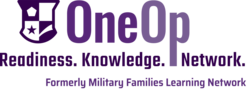Financial literacy is the ability to understand and apply personal financial management skills such as budgeting, saving, investing, and proper credit use, leading to an overall sense of financial well-being. A recent study found that financial literacy was generally poor among Americans overall, with the average US adult answering only 50% of financial literacy questions correctly (Yakoboski et al., 2022).
Differences in financial literacy were observed by race and ethnicity, age, gender, household income, and education level (Yakoboski et al., 2022).
- Race/Ethnicity. While Asian and White Americans, respectively, answered 54% and 55% of answers correctly, Black and Hispanic Americans answered only 37% and 38% of answers correctly.
- Age. Similar differences were seen by age, with Gen Z Americans answering only 42% of questions correctly, Gen Y answering 46%, Gen X answering 51%, and Baby Boomers and Silent Gen both answering 54% correctly.
- Gender. On average, men answered 55% of questions correctly, while women only answered 45% correctly.
- Household Income. Those with a household income of less than $25,000 answered 30% of questions correctly, compared to those with household incomes of $100,000 or more who answered 60% of questions correctly.
- Education Level. Those with a high school degree answered 38% correctly, compared to those with some college (49%) and those with a college degree (65%).
The 2022 Military Family Readiness Academy series will focus on identifying barriers to opportunity and will equip family service providers with the skills to identify opportunities for social justice advocacy in their work. Join the 2022 Academy Series Kickoff on June 1 for an overview of the different asynchronous and live offerings throughout the month.
For additional content related to working with clients on personal financial issues, visit the OneOp Personal Finance Team. Free CEUs are available for AFCs and CPFCs through our webinars.
Written By:
Selena Garrison
Reference
Yakasobi, P. J., Lusardi, A., Hasler, A. (2022). How financial literacy varies among U.S. adults. The 2022 TIAA Institute-GFLEC Personal Finance Index.



Comments (2)